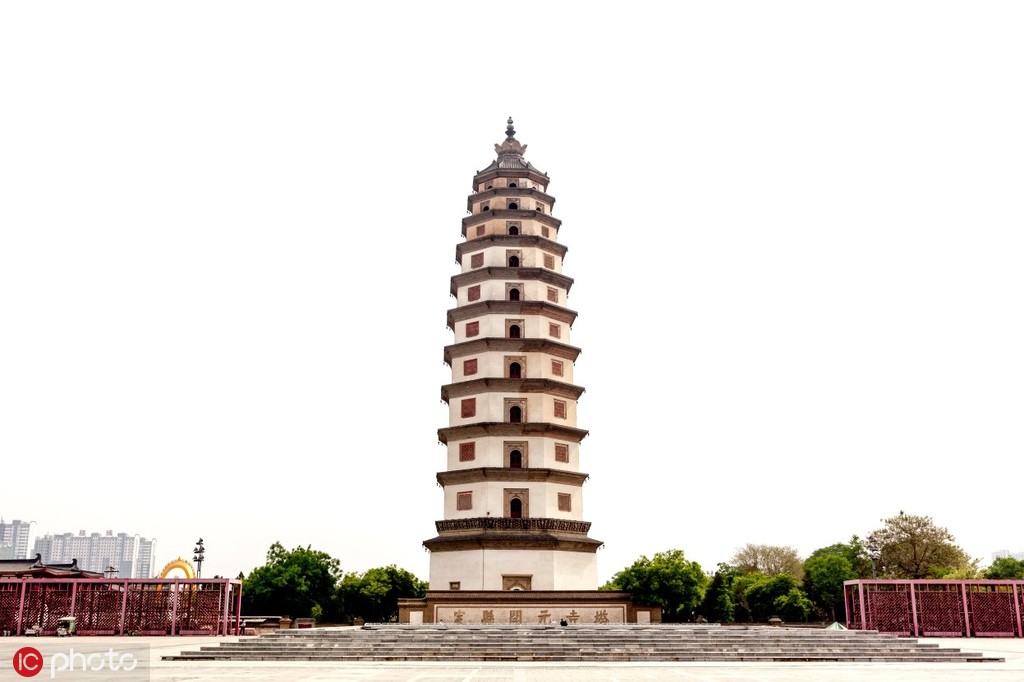The Kaiyuan Temple Pagoda

The Kaiyuan Temple Pagoda is the highest existing masonry pagoda in China. It is located in Dingzhou prefecture (today's Baoding, Hebei province) - the historical border region between the rivaling Northern Song (960-1127) and the Khitan Liao (916-1125), and was commissioned in 1001 by the Zhenzong emperor (r. 998-1022) in dire need of national defense against the Khitans. After decades of construction, the pagoda was finally built up in 1055, serving as a high tower for the Song to watch the military maneuvers of the Liao. No wonder it was more plainly known as the Pagoda for Forecasting Enemy's Intentions (Liaodi ta).

The 11-storey 84.2-meter-hig tower displays the superb craftsmanship in play as early as a thousand years ago. Both the outer wall and the body of the pagoda are octagonal in plan, with a 2-meter-wide staircase corridor in between. The eight faces of the outer wall alternate between doors and latticed windows.

Each storey has upward projecting corbelled eaves to make the cross section form a concave curve, looking like a giant eagle about to fly. The height and diameter of each storey decrease proportionally from bottom to top, making the pagoda soaringly straight and solidly stable. The finial of the pagoda is comprised of a honeysuckle pedestal holding an inverted alms bowl, an iron dew-collecting plate, bronze treasure bottles and beads.

From the second to the seventh storey, the upper part of the corridor has masonry brackets, braces, and other building components imitating wooden architecture.
The masonry pagoda is painted white on the exterior except for its cornices, floor foundations, doors, and windows, while the interior is fully decorated with elaborate carvings and paintings. The sharp contrast of color creates a remarkable artistic effect.
Over 30 steles are embedded in the walls of each storey. Except for a few dated to the Ming (1368-1644), most of them bear the names of the Northern Song donors from the nearby prefectures and towns who financed the pagoda, which provides first-hand information for historical research.




